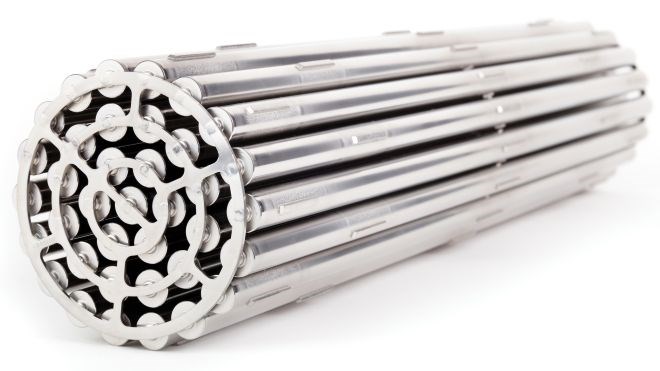THUNDER BAY DISTRICT – We the Nuclear Free North, will be dropping off postcards in residents’ mailboxes this week to raise awareness of the hazards of transporting 100,000 tonnes of nuclear waste across the province.
“This is not an issue for one community and certainly not for one corporation - it is an issue for the entire region, including those downstream and those along the transportation route,” commented Dodie LeGassick, a spokesperson for Environment North. “We’re very concerned about the exposure of residents along the transportation route, particularly if there was an accident. Ignace should not get to decide whether 22,000 trucks hauling radioactive waste are driven through Nipigon, and through Shuniah Township (just east of Thunder Bay), and all of the many other communities along the route. It is thousands of kilometres from the reactor sites to the DGR candidate site between Ignace and Dryden, and the residents and communities along the way will bear the transportation risks.”
The Nuclear Waste Management Organization has studied several potential locations over the last decade. Still, in 2021 they announced two possible sites: one in Teeswater within the municipality of South Bruce in Southwestern Ontario and the other in an area 40 kilometres west of Ignace on Treaty 3 land.
On their website, the group points out that there is no other operating deep geological repository for high-level nuclear waste anywhere globally.
However, the discourse surrounding nuclear waste management has been discussed in many countries with nuclear power for the past two decades.
In 2002, the Government of Canada entered into the discourse on long-term nuclear waste management when they asked the Nuclear Waste Management Organization to study possible approaches. The study focused on three methods identified by the government – deep geological disposal, storage at nuclear reactor sites, and above-ground centralized storage.
In 2005, the Nuclear Waste Management Organization presented its findings to the government, where they concluded that a deep geological repository was the only long-term solution.
According to Vince Ponka, communication manager for Nuclear Waste Management Organization, “every country with a nuclear program is in some phase of developing a deep geological repository for used nuclear fuel. It is considered international best practice. Finland is the furthest along in this process and is currently in the construction phase.”
The concerns from the We the Nuclear Free North stem from a potential spillage of radioactive material in the event of a collision during transportation.
Ponka informs, “in fact, in more than 50 years of shipping used nuclear fuel in countries around the world, there has never been an accident that has resulted in people or the environment being harmed by the release of radiation. There have been extremely severe accidents in the past where the transport vehicles were destroyed, but the used fuel shipping containers have remained secure.”
Brennain Lloyd, with the Northeastern Ontario-based coalition Northwatch, points out that the Nuclear Waste Management Organization’s plans are still in the “concept” stage, with three different transportation containers included in the program, none of which have been subject to actual testing and one still in the concept stage.
“The NWMO and the Canadian Nuclear Safety Commission like to describe the different tests and standards that transportation containers are subject to, but they gloss over that these particular containers have not been subjected to full-scale actual real-world testing. We have asked for the documentation to support their generalized claims, and the CNSC replied that it would take eight months to find the reports. We’re still waiting.”
Ponka addresses Brennain Lloyd’s comments by responding, “The transportation plan is still in the concept phase makes perfect sense considering that shipping is still 20 years away. That said, NWMO will not be able to transport used nuclear fuel without certification.”
Ponka’s response is a fair assessment to consider when thinking about the deep geological repository in Ignace. The Nuclear Waste Management Organization is still in the site selection process, which will not be considered until 2023. After selecting a site, the transportation of assessments will proceed for many years.
During the transportation assessment, all designs for the waste containment must meet the Canadian Nuclear Safety Commission certification standards, which also incorporate international safety standards. These requirements include testing the methods to demonstrate the ability of the package to withstand severe impact, fire, and immersion in water.
The used fuel transportation package (UFTP) has been tested and certified, and NWMO holds a valid certification today,” said Ponka. The Dry Storage Container Transportation Package (DSC-TP) would need additional certification work, and the basket transportation package (BTP) is a concept but would be based on one of the many designs in use internationally today. Both of those designs would have to adhere to the same requirements that were met for the UFTP that are based on standards set by the International Atomic Energy Agency. The role of the CNSC is to ensure that we are meeting those standards that are set by the International Atomic Energy Agency. “
These packages have been tested in laboratory settings and put through rigorous real-world tests worldwide (click here for a video about that topic).
We The Nuclear Free North will be hosting a webinar on transportation risks on Tuesday, June 7 at 7 p.m. EST and 6 p.m. CT. To register, click HERE.
